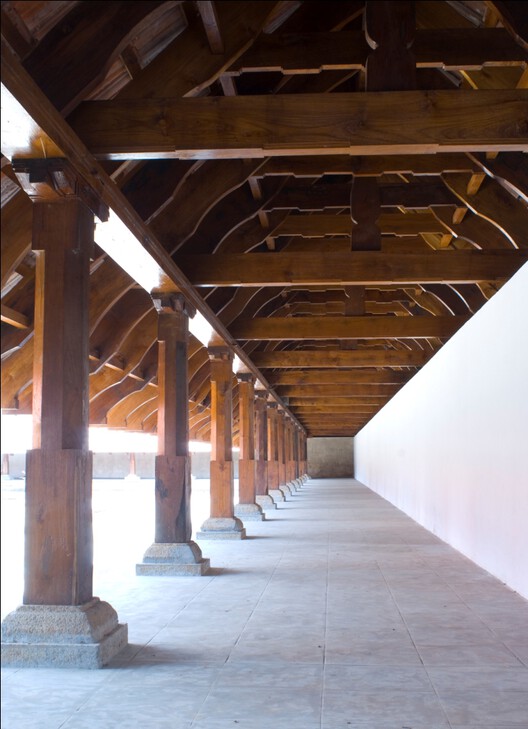
The Indian built environment constantly negotiates ancient traditions, diverse population, and globalized ambitions. When it comes to heritage preservation, these forces often converge to create a distinctive approach to conservation efforts in the country. Beyond the conventional models seen in many parts of the world, India's conservation projects intertwine historical practices, community engagement, and a reverence for the living essence of buildings.
Despite India's particularly continuous civilization, the formal practice of conservation is said to have emerged with the establishment of the Archaeological Survey of India (ASI) by the British in 1902. While still in its early stages as a matter of broader public and professional concern, a wealth of knowledge is evolving. Through a synthesis of indigenous experience and international collaboration, guidelines for the preservation of Indian architectural and urban heritage are in development. The process seeks to achieve a clearer definition of the Indian context in the realm of conservation planning.
Historical conservation projects were not concerned by the complexities of modern Indian lifestyles and typically focused on addressing local challenges. Unlike the widely prevalent architect-mason-contractor model, traditional conservation efforts involved a varied ensemble of professional such as craftspeople, astrologers, priests and local heads, ecologists, and more. Similar to contemporary construction projects that demand a collaborative and multidisciplinary effort, traditional restoration engaged the entire community as active stakeholders.
Related Article
Urban Sanitation in India: Past, Present, and FutureAn example of this collaborative approach unfolds in the restoration of the Vadakunnathan Temple Precinct in Thrissur, Kerala, by local architecture firm dd Architects. This temple, constructed in the state's traditional architecture style, was built on the sacred land of a grove. The vision behind this sacred grove was not merely to accommodate humans but to create space for animals, insects, and spirits - a holistic approach to coexistence with nature.
The restoration project for the Vadakunnathan Temple embodies a unique philosophy. “As architects we were merely facilitators of the process”, shared Vinod MM Kumar, founder and principal architect of dd Architects. Their role was not to impose major interventions but to assist and organize the existing processes. In India, conservation projects are deeply embedded in an ancient process as a form of "life-giving." The goal is not just to preserve structures but to infuse life back into them, a sentiment that aligns with the holistic understanding of nature.

Indian structures, especially religious buildings, are perceived as living beings with its own life force. The conservation of temples, residences, and other heritage sites involves rituals that go beyond the tangible elements. Seeking approval from deities and trees before initiating work and conducting rituals akin to anesthesia to draw energies to specific areas are integral aspects of the conservation process.
The Vadakkunnathan Temple stands as a testament to this practice. Situated in a contested yet democratic realm, the temple's conservation process remains accessible to all. Beyond ritualistic use, the community actively participates in shaping the evolving urban landscape surrounding the temple. It transforms the conservation effort into a shared narrative, preserving the authenticity and integrity of a living monument.

India grapples with a delicate balance of preserving tradition while navigating rapid modernization. The built environment, where the old and the new coexist, reflects these complexities. Challenges in conservation lie not only in physical preservation but also in maintaining functional relevance amid shifting societal patterns.
While historic religious structures usually retain societal significance, other architecture, such as palaces and residential buildings, struggle with remaining culturally relevant. Shifting social patterns, such as the transition from joint families to nuclear families, impact the relevance of these structures in modern times. Yet, they are indispensable to the built landscape, serving as crucial threads connecting citizens to their cultural identity.
The restoration of an 300-year old palace in Kerala by dd Architect demonstrates the cultural value traditional architecture embodies. Facing imminent demolition due to its valuable location, the structure held historical importance as one of the oldest structures in the locality. The preservation of such structures becomes synonymous with preserving the history and identity of a place. "In today's unipolar world, understanding the history of a place becomes a crucial aspect of connecting with the land and establishing a sense of identity", Kumar remarks.

India's heritage is diverse, varying from state to state, and demands a nuanced approach to conservation. A significant challenge lies in the shortage of architects and heritage conservationists equipped with a deep understanding of regional cultures and building languages. Each locality possesses unique heritage, culture, and traditions, requiring a specialized understanding for effective preservation.
The urgency for localized conservation knowledge is heightened by the fact that only a few projects in each locality are conserved in the traditional manner. As India strides into the future, the conservation process must involve the community and various stakeholders, turning preservation into a collective effort. "It's not just about saving physical structures, it's about safeguarding the stories, identities, and connections embedded in the culture of each region", Kumar states.

India's conservation projects transcend the sheer preservation of structures. They embody a holistic approach that embraces tradition, collaborative dynamics, and a respect for the living essence of buildings. Looking ahead, it is critical to maintain the momentum observed in the past towards conservation projects. The preservation of heritage isn't merely a task for architects and experts- it is a shared responsibility that binds communities, preserves identities, and ensures that India's cultural heritage continues to thrive.
This article is part of an ArchDaily series titled India: Building for Billions, where we discuss the effects of population rise, urbanization, and economic growth on India’s built environment. Through the series, we explore local and international innovations responding to India’s urban growth. We also talk to the architect, builders, and community, seeking to underline their personal experiences. As always, at ArchDaily, we highly appreciate the input of our readers. If you think we should feature a certain project, please submit your suggestions.











